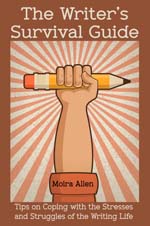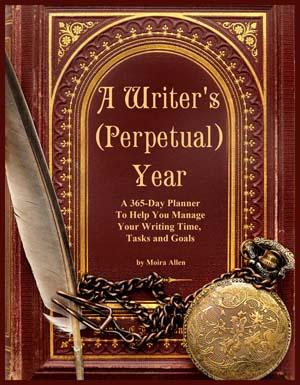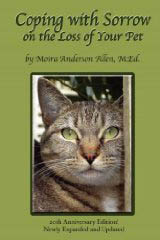 Your Guide to a Successful Writing Career
| |||
|
by Anne Marble
To make things more confusing, some categories have subcategories, which in turn have further varieties. So the romance genre, supposedly full of books that all "sound alike," really resembles a tree with branches going off into many directions. As if that weren't enough, there are categories within categories and some subcategories (such as humorous or romantic suspense) that can be found within all categories. One thing I want to get out of the way right now is that romance novels do not necessarily have sex in them. For example, Regency romances often tell a love story without so much as a passionate kiss. Even when they do have sex scenes, the best romances are not about sex, they are about love. So think of them as love scenes,not sex scenes, and you'll have a better understanding of the genre as a whole.
As you might guess, historical romance novels take place in the past. It's not so easy, though. For one thing, Regency romances (see below) take place in the past, but they don't fall into this category. Also, within historical romances, books can use varying amounts of history as their background. Some historicals use the setting as a "wallpaper" while others are in depth. As if that weren't enough, the moods and plots of the books vary widely from humorous to deadly serious. Mystery and intrigue plots are often popular. Also, while some historical romances have dollops of sex, others have only a few love scenes or even none at all. If you decide to write historical romances, be warned that publishers simply aren't interested in some periods. At times it feels as if all the historicals are set in the American West, Medieval England, or Regency England. Something of an exaggeration, but not too far off. Yet even when books are set in the same era, they can be as different as night and day. For example, both Julia Quinn and Anne Stuart have set historical romances in the Regency period. Yet Julia Quinn writes romps with clever banter, while Anne Stuart writes about tragic, driven characters who sometimes betray each other before finding redemption. Notable writers of serious historical romances include Mary Jo Putney, Patricia Gaffney, Laura Kinsale, Anne Stuart, Johanna Lindsey, Catherine Coulter, Lorraine Heath, LaVyrle Spencer, Judith McNaught, Kristin Hannah, Megan Chance, Linda Francis Lee, and Judith Ivory. For a lighter read, try Julie Garwood, Julia Quinn, Amanda Quick, or Jill Barnett. The ones your mother won't let you read are by Bertrice Small, Susan Johnson, Thea Devine, and Robin Schone.
As you might expect, contemporary romances are set in the present. At this time, popular trends include humorous romances and romantic suspense. (Romantic suspense is big enough to get its own category in this article.) That could change any minute now. Besides, many writers aren't afraid to tackle serious stories about characters recovering from abuse or alcoholism, people coping with life-changing events, and so forth. That said, tearjerkers where somebody dies at the end are published as woman's fiction rather than romance. Notable writers of humorous contemporary romance include Susan Elizabeth Phillips, Elizabeth Bevarly, Jennifer Crusie, and Rachel Gibson. For a more serious read, turn to Paula Detmer Riggs, Theresa Weir, Kathleen Eagle, or Ruth Wind. For more suggestions, check out the Romantic Suspense listings.
Category romances (also known as series romances) are a special type all their own. These are the books put out in monthly "lines," such as Silhouette Special Edition and Harlequin American Romances. The major publishers are Harlequin and Silhouette, although some other publishers have dabbled in this field. All but one of the lines are contemporary. Category romances are shorter than the typical contemporary romance. Like other types of romances, they can be dramatic, humorous, sexy, or mysterious. Before submitting to one of the lines, you must read their guidelines and read the books within that line. Many writers start out writing category romance and go on to longer "single-title" romances. (A single-title book is a romance that is not part of a series.) Authors who have gone on from category romances to bestsellerdom include Nora Roberts, Linda Howard, and Elizabeth Lowell. Other notable authors in this field include Suzanne Brockmann, Jan Freed, Margot Early, Ruth Wind, Eileen Wilks, Ruth Wind, Virginia Kantra, Rachel Lee, Marilyn Pappano, and Lori Foster.
Regencies are not the same as historical novels set during the Regency period. They are shorter, generally with an emphasis on Regency society and dialogue over action and sex (although Mary Balogh and others have brought sexuality into the Regency.) It's safe to say that Regency romances owe as much to Georgette Heyer (one of SF author Lois McMaster Bujold's favorite writers) as they do to Jane Austen. However, today's Regency doesn't have to be a drawing room comedy or a romp. The Regency can be about angst-ridden characters, about heroes discovering the importance of family life, about heroines recovering from sexual abuse, bluestockings, and even about heroines forced to become prostitutes (Mary Balogh's The Secret Pearl). Many writers started out writing Regencies before turning to historicals romances. Notable authors of humorous Regencies include Emma Jensen, Barbara Metzger, Diane Farr, Marion Chesney, and Kasey Michaels. Notable authors of more serious Regencies include Mary Balogh, Carla Kelly, Joan Wolf, Patricia Oliver, Mary Jo Putney, Alison Lane, Elisabeth Fairchild, and Jo Beverley.
Some romances don't take place in the real world -- they take place on other planets or in imaginary lands, or they involve creatures such as vampires, werewolves, genies, ghosts, and pixies. The tone can range from dark and gloomy to whimsical, even fluffy. Be aware that the worldbuilding and science fiction elements usually aren't as strong as in typical science fiction or fantasy -- the romance always comes first. Books in these subgenres are generally hard to sell to traditional publishers, although J.D. Robb (actually Nora Roberts) and Dara Joy do well. However, some e-publishers specialize in these books. Notable writers of futuristic and fantasy romance include J.D. Robb, Dara Joy, Susan Kyle, Susan Grant, Justine Dare, and Amanda Glass. Notable writers of paranormal romance include Susan Krinard, Maggie Shayne, Jillian Hunter, Christine Feehan, and Christina Skye.
Like futuristic, fantasy, and paranormal romances, time travel romances take place one step beyond the "real" world. Unlike those other stories, however, time travel romances are more likely to be popular with the typical romance reader. Readers who would hold up garlic every time they see a vampire romance might still enjoy time travel romances. Maybe it's because so many readers have the fantasy of traveling back to a more romantic age. That might explain why it's most often the heroine who goes back in time. The most notable author of time travel romances is Diana Gabaldon, though to be fair, she doesn't think of herself as a romance writer. Another best-seller in this field was A Knight in Shining Armor by Jude Deveraux. Other writers in this subgenre include Constance O'Day-Flannery, Lynn Kurland, and Sandra Hill.
This is a genre that you don't see much of today unless you spend a lot of time in used book stores. These books were more popular in previous decades. That's not to say Gothic romances aren't being published, but they're often published as romantic suspense instead. The typical Gothic romance combines moody atmosphere and suspense with a brooding hero and a heroine is unsure of whether she can trust the hero. For example, the heroine might wonder if the rumors about the hero killing his first wife are true. In some Gothics, the heroine had to decide between two men -- often a fair, charming man and a dark, brooding one. Of course, the charming man turned out to be the psychopathic killer, and the brooding man saved her. Popular authors of the past have included Victoria Holt, Phyllis Whitney, and Mary Stewart. Today, writers such as Barbara Michaels, Megan McKinney, Kay Hooper, and Theresa Weir still write with a Gothic touch.
Romantic suspense is a cousin of the Gothic romance. Today, the windswept moors and spooky houses are out of favor. Most romantic suspense novels explore plots involving drug dealers, serial killers, smugglers, and the like. While most of these books are serious, there is a growing trend in humorous romantic suspense novels. Almost all romantic suspense novels are contemporaries, although some authors (such as Elizabeth Thornton and Amanda Quick) have written historicals with romantic suspense subplots. Many writers have used romantic suspense as a bridge from romance novels to mainstream bestsellerdom. Popular writers of romantic suspense include Catherine Coulter, Linda Howard, Sandra Brown, Jayne Ann Krentz, Susan Andersen, Tami Hoag, Iris Johansen... the list goes on and on. Like I said, it's a popular category. If you're interested in writing a particular type of romance, be sure to read a wide variety of books in that subgenre. You don't want to tread over ground that has been covered before -- unless you can cover that ground with new growth.
This article may not be reprinted without the author's written permission. Anne M. Marble has published articles in Gothic Journal and Writer's Digest and is a columnist for All About Romance (AAR). Just about everything she writes includes a romance element, even if it's a fantasy novel about a lord and a countertenor. Her day job involves editing articles for the Journal of Biological Chemistry. |
| ||
| |||




